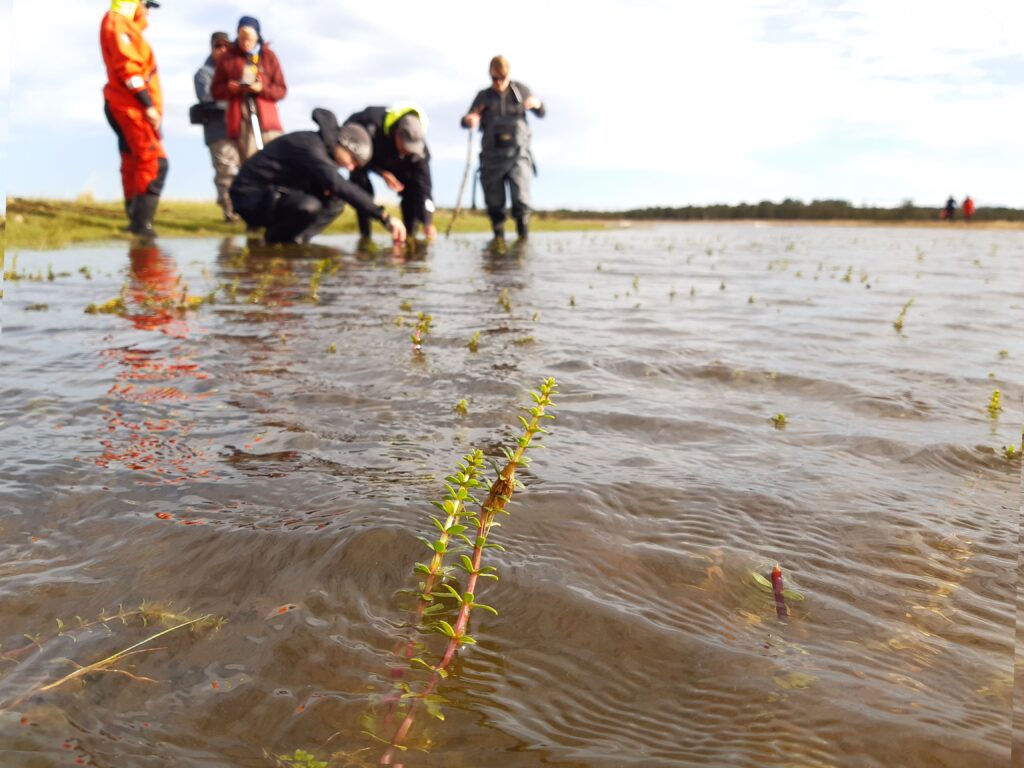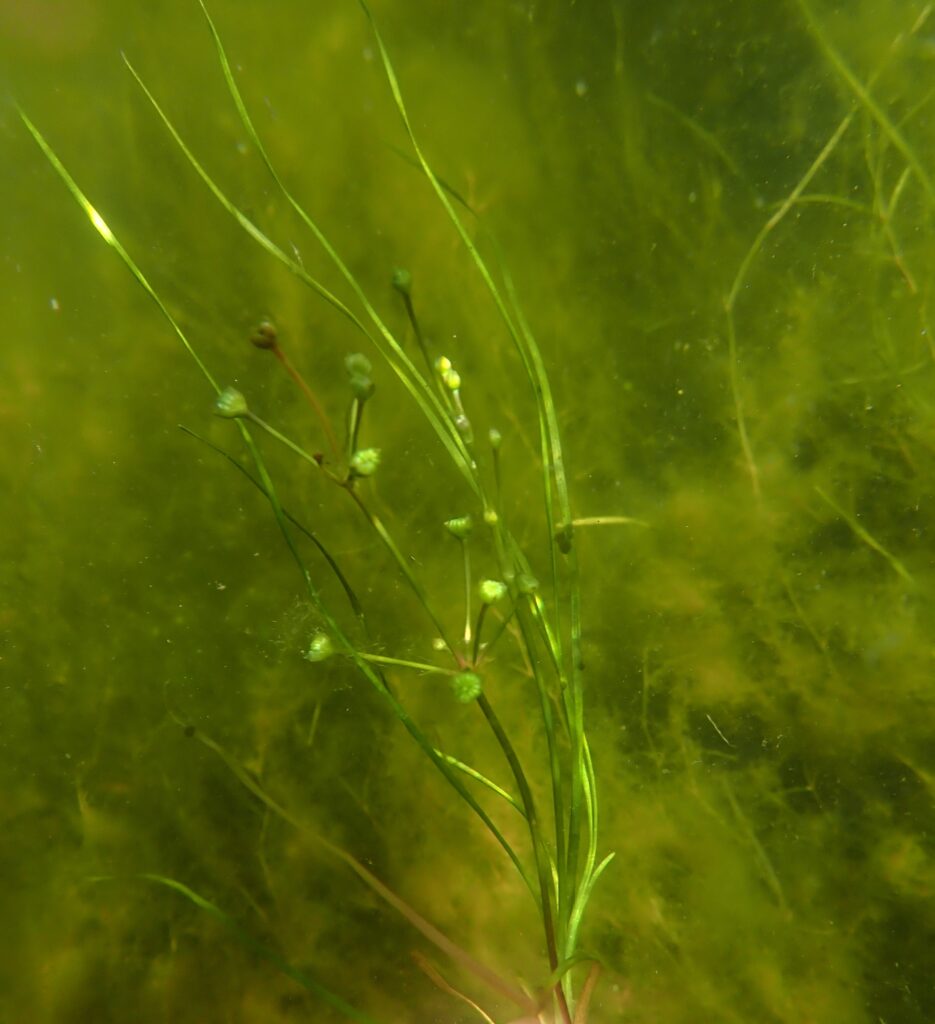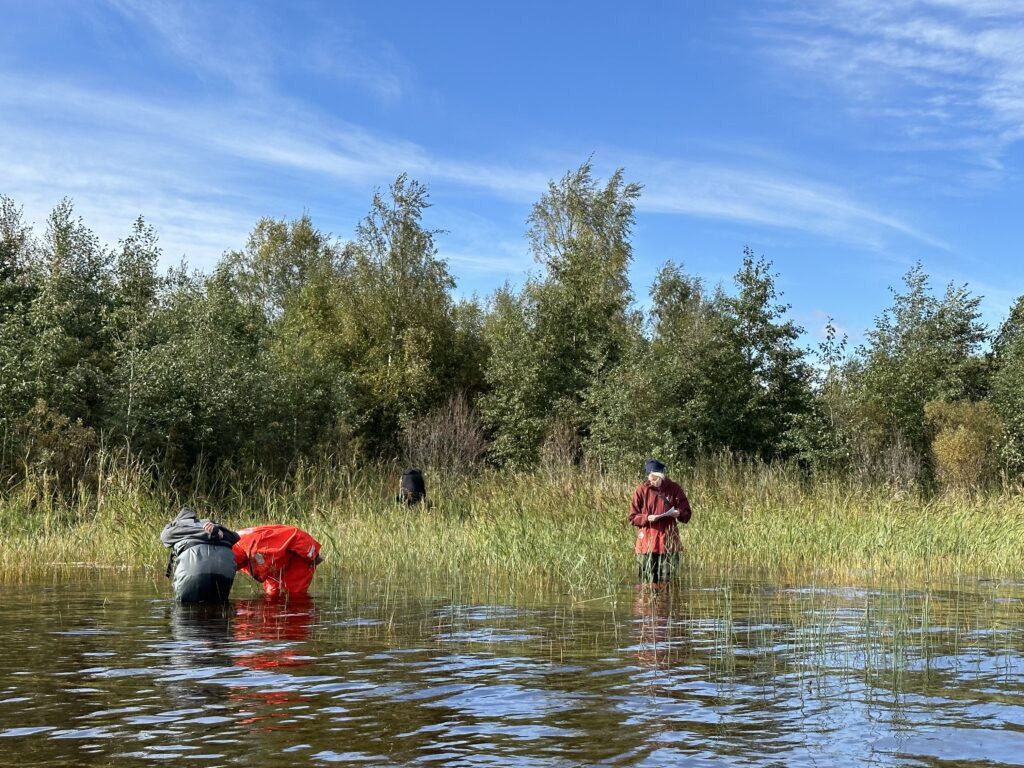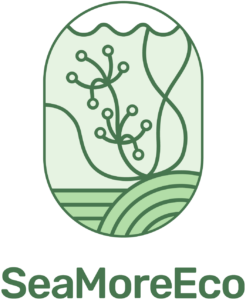The project area houses many rare and threatened species and habitats listed in the Habitats Directive annexes. Some of these species, such as Baltic water-plantain (Alisma wahlenbergii) and the aquatic leaf beetle (Macroplea pubipennis), have their main area of occurrence in the northern parts of the Gulf of Bothnia. The knowledge of the listed species varies, and for some the data on distribution and population sizes is scarce. There are still some unknown dynamics that cause the population sizes to fluctuate. Thus, monitoring of the species needs to be planned accordingly and in close cooperation. Therefore, it is important to cooperate, since experiences, data and models from Finland and Sweden can aid in monitoring the already known occurrences and help to locate important species from new places across border.


Above left: The endangered Fourleaf mare’s tail (Hippuris tetraphylla) grows on very shallow bottoms. In Sweden they only exist in one location, which is on the coast of Västerbotten. Along the Finnish coast they are more frequently occuring. Photo: Centre for Economic development, Transport and the Environment Southern Ostrobothnia. Above right: Baltic water-plantain (Alisma wahlenbergii). Photo: Centre for Economic development, Transport and the Environment Northern Ostrobothnia.
Directive habitats are habitats that have a small natural area of occurrence, and they are in danger of disappearing, or habitats that represent well their natural geographical area. One of the common directive habitats in the project area is coastal lagoons. They offer a sheltered and warm environment for numerous species. However, these lagoons and marine directive habitats in general are threatened by human impact, such as eutrophication, water construction and transportation. In addition, one of the major threats for the directive habitats are invasive alien species. Invasive alien species affect the vulnerable northern marine habitats and their species. Waterweeds (Elodea spp.) are some of these invasive alien species spreading into the marine environment, taking over habitats and outcompeting local plants. Elodea canadensis is known in both Finnish and Swedish coast, and Elodea nuttalii is a growing problem on the Swedish side of the Bothnian Bay.

Project staff looking for Fourleaf mare’s tail (Hippuris tetraphylla) in the shallow water outside of Oulu. Photo: Centre for Economic development, Transport and the Environment Northern Ostrobothnia
The purpose of this activity is to gather existing knowledge and new data from authorities working with these species and habitats of interest in both Sweden and Finland, in order to ensure efficient management of the species and to develop a suitable monitoring method(s) for them. We will work towards this goal by sharing knowledge across border, having workshops and field trips and by testing monitoring methods such as remote sensing.
At the end of the project, we hope to be able to point out efficient method(s) for monitoring endangered species and habitats in the northern parts of the Gulf of Bothnia and to provide environmental authorities with species-specific information. We aim to evaluate cost-effective methods for monitoring waterweeds (Elodea spp.) and make a proposal for managing Elodea in the Northern Gulf of Bothnia.

